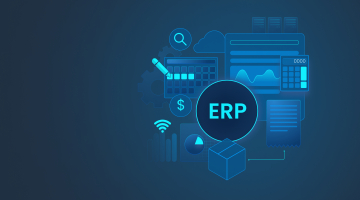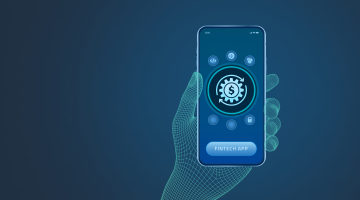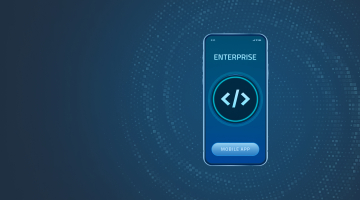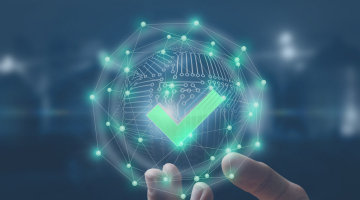

How to build an AI agent system: Key types and architecture
As the rapid spike in Google search results for the AI keyword shows, the contemporary digital landscape is impossible to imagine without an in-depth involvement of artificial intelligence. AI-powered tools and systems are robustly entering multiple verticals. They are intensely leveraged by specialists in various business processes – from data visualization and data analytics to automating repetitive tasks and predicting market trends.
Each assignment requires a special kind of AI-driven technology, such as natural language processing, machine learning, generative AI, or neural networks, that fuels cutting-edge tools used for handling complex tasks. Among the plethora of disruptive AI solutions, AI agents are gaining notable traction.
This article will explore the emerging trends in AI agent development, list their types and forms, explain how AI agents work and their organizational structure, disclose the major advantages of custom agents, and offer a universal roadmap for building AI agents.
AI agents: Definition and growing impact
An AI agent is a highly autonomous virtual assistant that can execute specific tasks by analyzing the environment in which it operates, making data-driven decisions, and acting on them. Since they are based on machine learning models, a mission-critical characteristic of such intelligent agents is their ability to learn from previous interactions and become more effective in their job. When united into one ecosystem, such solutions can collaborate with other agents, teaming up to analyze data or complete tasks and emulating human decision-making during brainstorms.
In corporate contexts, an AI agent’s ability to interpret data and user inputs for further action planning and task execution finds multiple use cases in various industries. For instance, healthcare institutions can employ AI agents for scheduling appointments, insurance companies find them instrumental for fraud detection, while customer service in any sector can benefit from the powered by AI agents chatbots that can provide relevant responses to customer inquiries.
Given the perks mentioned above, it is no wonder that an ever-increasing number of organizations are poised for leveraging AI agents to revolutionize all the components of their internal pipelines and obtain a competitive advantage over their rivals.
Such an across-the-board advent of these smart AI assistants is expected to spread not in ripples but in waves. By 2028, at least 15% of all professional decisions will be made solely relying on AI agents, while 33% of enterprise software will necessarily include multiple agents.
What are other prospects related to the development of these AI systems?
The emerging AI agent development trends scrutinized
Constantly monitoring the AI agent domain, AI development experts of DICEUS have singled out four major trends that will shape the contours of the niche within the foreseeable future.
Low-code/no-code development
The democratization of access to state-of-the-art technologies will lead to greater momentum in foolproof AI solution development, requiring no or little technical expertise. Platforms like Vertex AI agent builder number among their clients not only global behemoths like Citigroup, General Motors, or Mercedes-Benz but also hundreds if not thousands of small businesses. Their non-tech personnel can use natural language commands to build powerful AI agents and experiment with creating intelligent systems for their unique shop floor use cases.
Greater autonomy and adaptability
Thanks to the advances in natural language processing and reinforcement learning, today’s autonomous AI agents will be considerably upgraded to obtain greater independence. With the widespread employment of retrieval augmented generation (RAG) technology, their ability to gain a comprehensive understanding of the context will increase, allowing them to generate more accurate and appropriate responses to queries and engage in more meaningful conversations with users. Besides, AI agents of the new generation will switch over from reactive assistance to proactive problem-solving, anticipating users’ needs and forecasting future outcomes.
Multimodal interaction
The increasing ability of AI models to mirror human cognitive processes will result in the appearance of multimodal AI agents that can use vector search to retrieve, integrate, and process input from diverse data sources (texts, audio, images, and video). Moreover, their potential won’t be limited to data processing only. They will be able to generate output where various data formats are seamlessly combined, opening broad vistas for businesses in creating marketing materials, designing advertisements, and providing top-notch customer support.
Ethical and trustworthy AI
As artificial intelligence’s involvement in our lives grows, concerns related to its ethical and ecological use increase proportionately. That is why, while developing AI agents, experts will double their efforts to ensure their transparency, the exclusive security of key data they utilize, the absence of bias in the input used for training, and delineating accountability areas between machines and human personnel involved in decision-making. Down the line, we will witness the appearance of legal regulations and industry standards pertaining to ethical AI practices.
These trends will dominate the realm tomorrow and beyond, covering all types of AI agents.
Varieties of AI agents showcased
Depending on the sphere of their application, Thomas Kurian, Google Cloud CEO, categorizes AI agents into six groups.
Customer agents
They act like experienced sales or customer service reps, listening to what clients say, understanding their needs, and providing tailored recommendations, which enhances engagement and enables personalized assistance. Customer agents are extremely versatile and flexible, susceptible to broad customization initiatives concerning interaction channels they are employed in, languages they use, conversation flows they participate in, and specific subject matters they are honed to discuss. If they realize the matter is beyond their competence, they refer the case to human personnel.
Employee agents
As the name suggests, their target audience is enterprise workers. Such agents are geared to perform repetitive tasks, quickly respond to queries, and promote communications within an organization. Their versatility can be essentially augmented by integrating them with numerous internal and external systems via multiple APIs provided by Vertex extensions. Leveraging employee agents, companies improve collaboration among their staff, streamline and facilitate workflows, enhance productivity, and boost workplace efficiency.
Creative agents
Generating images, slides, and content in other formats (like Canva does in its Magic design video feature) becomes a breeze with these agents. They bring the most value into design and production workflows, helping teams in these sectors to optimize processes and accelerate content creation.
Data agents
They serve as key components of data processing routines, sifting through vast amounts of texts, audios, and videos stored in data repositories, analyzing specific information they are honed to tackle, and summarizing results by presenting them as a collection of valuable insights. Moreover, they can go beyond finding answers to suggested questions and come up with new queries that should be explored. Such agents play a pivotal role in creating data pipelines and monitoring performance metrics by alerting personnel when KPIs are not met or at risk.
Code agents
Much of the code developers use to create software products is repetitive. Code agents can anticipate recurrent code lines, complete them, and even suggest improvements, thus speeding up the development process, enhancing development teams’ productivity, and augmenting SDLC cost efficiency. Alongside streamlining coding tasks, these tools excel at intelligent bug detection and resolution, QA execution, and software system maintenance.
Security agents
Their overarching goal is to guarantee rock-solid security of the enterprise’s IT ecosystem as a whole and its separate elements. They continuously monitor the protective perimeter of the digital environment, identify threats, address them in a New York minute, explain detected issues, summarize findings, and recommend steps to forestall such problems in the future. The employment of such agents allows organizations to implement a proactive approach in dealing with cyber threats and effectively respond to challenges in the security realm.
Another classification of AI agents takes into account their functionality and interaction capabilities.
Zooming in on the forms of AI agents
The primary model of an AI agent’s functioning can be geared toward its separate operation or acting in sync with other agents.
- Individual agents. Single AI agents work independently, performing a narrow set of specific functions. Using system prompts, these agents handle customer queries, manage employee schedules, or offer product recommendations. Their simplicity and straightforward focus make them perfect instruments for performing well-defined roles.
- Multi-agents. They work together, forming connected systems where the elements coordinate their operation through constant communication. Usually, each agent within this system is responsible for a certain area or process, thus contributing to the common cause. An example of such multi AI agents is an advanced ERP system, in which the procurement, inventory management, logistics, order management, and warehouse management modules are governed by their own AI agents that collaborate to ensure the seamless and cohesive performance of the entire system.
- Hybrid agents. These solutions blend human intelligence and a machine’s computational power to maximize the efficiency of this synergy. Generally, a hybrid AI agent utilizes insights delivered by artificial intelligence to delegate decision-making to humans. Such collaboration is necessary in areas like medical diagnostics or vehicle navigation, where intricate tasks require human oversight and professional expertise.
Thus, the choice of an AI agent for your specific needs depends on the complexity of tasks it will tackle, the required level of collaboration, and the necessity of human participation in the decision-making. But no matter what agent type suits you better, they are organized and function along basically identical lines.
Core architectural components of autonomous AI agents
Knowing the artificial intelligence realm inside out, our seasoned specialists distinguish four modules within AI agent architecture.
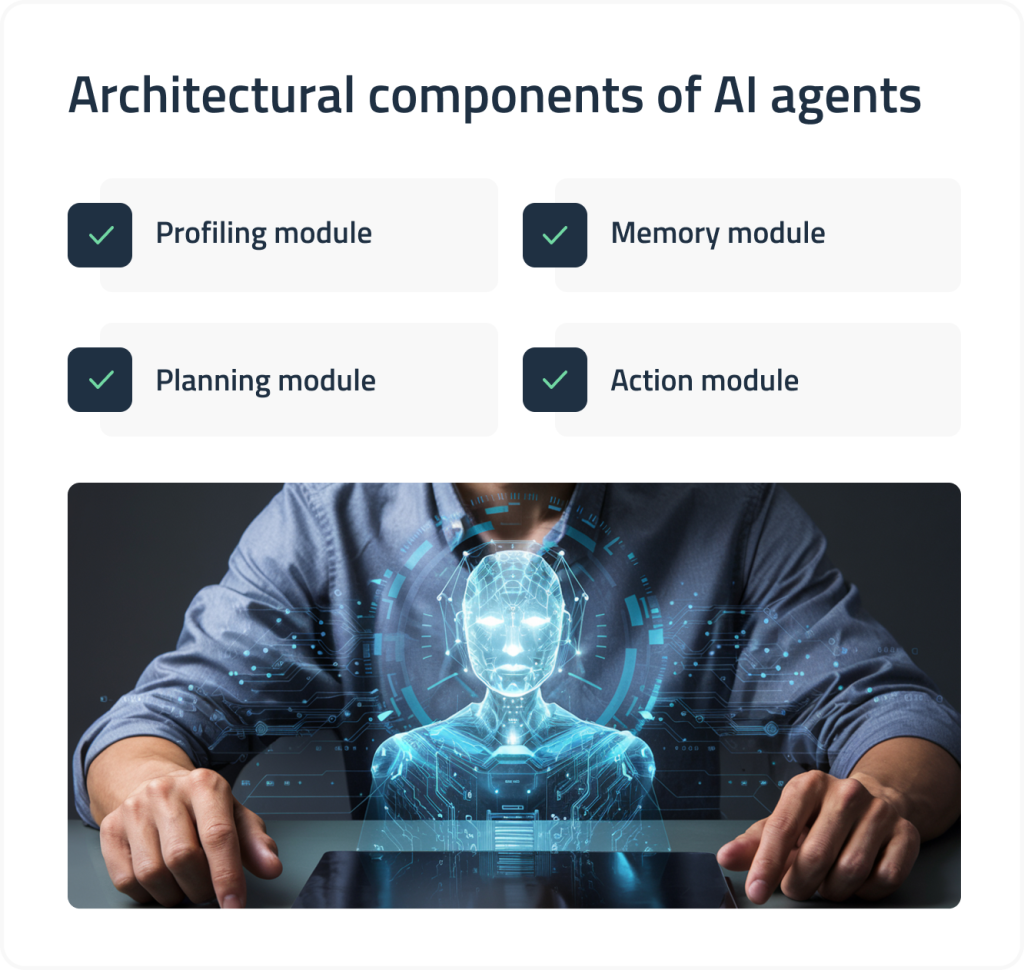
Profiling module
Acting as the agent’s sensory system (hence its other name – the perception module), it collects and interprets information from the environment, including the enterprise ecosystem and external data sources. The module is honed to derive any input (auditory, visual, tactile), filter out irrelevant details, and process the selected data points, focusing on characteristics and features vital for further decision-making.
Memory module
It serves as a knowledge repository encompassing a vast bulk of information about the agent’s previous experience and interactions, as well as rules, patterns, legal regulations, assessment criteria, and other relevant records and dossiers. With access to this database, the agent can draw upon its content, learn from it, and utilize it to make knowledgeable decisions.
Planning module
In it, the current situation is analyzed, relying on the information received from the profiling and memory modules. As a result, the most appropriate strategy for reaching the goal is devised. For goal-based agents, it is mission-critical to consider task requirements and employ relevant techniques (such as advanced search methods, optimization algorithms, rule-based systems, etc.).
Action module
Here, the planned course of action is executed. The AI ensures the accurate implementation in accordance with contextual requirements and monitors the outcomes, providing feedback that can be utilized in future adjustments and fine-tunings of the system.
While designing the modules, it is necessary to equip them with an adaptation mechanism – a set of learning strategies that enable AI agents to evolve and adjust their performance in accordance with the changing requirements and new situations, improving over time through learning from past experiences.
The three basic learning strategies are:
- Supervised learning. Labeled examples are used for training the system to forecast outcomes or take action.
- Unsupervised learning. Agents unlock patterns and discover relationships within data that doesn’t contain any explicit instructions.
- Reinforcement learning. The agents’ optimal behavior is achieved by giving them rewards or penalties for the steps they take.
All elements of an AI agent’s architecture work in harmony to reach the goal set for it. How does it happen?
How AI agents operate: A brief overview
The agent system’s seamless operation depends on the seamless collaboration of separate components within it.
It all starts in the profiling module, where the observer agent assesses the input data, augments it with relevant context, creates a task that includes this context, and directs it to the task queue, all while storing a copy in its memory. Then, the prioritization agent steps in, evaluating the task’s rank and determining its turn in the queue. When this turn comes, the task execution is handed over to the action module. The execution agent in it may proceed to perform the task if all conditions and requirements are met. Typically, complex tasks are broken into a set of manageable steps, which are then implemented with the help of special tools. Sometimes, the input information may lack context, in which case the execution agent launches a request for additional data from the memory module or leverages APIs to obtain missing data points from external sources.
Once the task is completed, the results are handed over to the decision-making tool or through output devices to human employees responsible for this job. Now, the execution agent is free for a new assignment, so it looks into the task queue to tackle the next errand.
To maximize the efficiency of such AI agent systems, you should create one that dovetails with your organization’s business needs and technical requirements, which spells going for a bespoke product.
Business benefits of custom AI agents
Companies that build AI agents expect these tools to help them in the pivotal aspects of their shop floor routine.
Let’s see what boons ushered in by harnessing bespoke AI agents enterprises receive.
- Customization to business needs. Off-the-shelf solutions are garden-variety products that may contain features and functionalities your company will never use (but pay for as compulsory package components). With bespoke AI agents, you can design the characteristics and interactions you need to address specific challenges and work with input data relevant to your industry or niche.
- Scalability and adaptability. Depending on the size of your business, you can commission an appropriate AI agent system. Moreover, while building it, you can envisage its scalability and flexibility potential that can be realized once your company grows, expands into other geographical or industry areas, or reaches out for untapped markets.
- Continuous improvement and innovation. Traditionally, boxed solutions are quite rigid, unable to integrate with emerging technologies or new systems that constantly crop up. Custom AI agents are open to innovation and updating. They can be enhanced based on changing requirements and real-world feedback, ensuring the disruptive nature of enterprise software.
- Increased efficiency and productivity. It goes for the implementation of any cutting-edge technology into a company’s workflows. However, since custom solutions fit their use cases to a tee, the improvement in KPIs they yield is more tangible.
- Boosted decision-making. Bespoke AI agents’ ability to analyze niche-specific data quickly and accurately positively impacts the quality of operational and strategic decisions supported by knowledgeable insights. As a result, businesses unlock new opportunities, optimize pipeline processes, and mitigate potential risks better.
- Compliance and data security. Every industry has specific data security regulations, which are especially stringent in the healthcare, fintech, and banking domains. When building bespoke AI agents, you can design them to adhere to these standards and equip them with high-end security mechanisms that off-the-shelf products often lack.
- Cost efficiency. While initial investment in tailor-made solutions is higher, you stand to gain in the long run since you pay only for the functionalities you need and don’t have to splurge regularly on license payments for boxed products that amount to a considerable sum down the line.
- Enhanced customer engagement. Custom AI agents allow for a high level of service and product personalization, which is the name of the game in modern business. Leveraging them, companies give tailored responses to client queries, provide individual recommendations, conduct granular customer segmentation, and open new upselling and cross-selling opportunities.
- Competitive advantage. A robust and scalable enterprise IT infrastructure created with the help of custom AI agents streamlines and facilitates shop-floor processes and fosters customer loyalty through the personalization of services, giving organizations that onboard it a strong competitive edge over their industry rivals.
To enjoy all the perks that tailor-made AI agents bring, you should know how to develop them properly.
How to build an AI agent: SDLC fundamentals
While crafting custom AI agents, DICEUS’s highly skilled team of specialists follows a nine-step roadmap.
Step 1. Identifying target tasks
We kick off by creating an exhaustive list of responsibilities the future agent will be in charge of. This roster ultimately conditions the solution’s design and costs.
Step 2. Understanding the operating environment
By studying the digital surroundings of the prospective AI agent (mobile app, website, ERP, etc.), the development team can envisage its compatibility and viability.
Step 3. Collecting necessary data
First, we assemble relevant data from all available sources (database files, real-time data, user inputs, and more). Then, we prepare it for training LLM models, making sure it is complete, accurate, consistent, and compatible with the model you plan to utilize.
Step 4. Selecting the tech stack
Knowing what to aim for, the development team opts for the programming languages (Java and Python are the best choices here), frameworks, tools, and other SDLC instruments. Special attention is paid to the selection of an agent-building platform (we prefer Microsoft’s AutoGen) and a large language model relevant to the tasks the AI agent will tackle. Besides suitability for creating specific AI agents, the technology’s scalability and cost are important tipping factors.
Step 5. Designing the agent’s architecture
At this stage, we define the specifics of the agent’s modules, determine their functions and concurrency of operation, envisage APIs the system will use for deriving data, clarify the ways of output generation and presentation, design user interface, and devise feedback mechanisms.
Step 6. Coding
This is the core AI agent development phase, when software engineers craft the solution’s back-end features and modules, implement front-end design, provide API connections and database integration, and ensure learning capabilities.
Step 7. Testing and debugging
Nothing is ready until the solution is subjected to an out-and-out testing procedure. The QA team conducts unit testing of individual modules and their integration testing, as well as performance testing of the entire system. All bugs and glitches exposed along the way are dealt with on short notice.
Step 8. Deployment
It is an effort-consuming job. First, we determine storage capacity, security protocols, computational resources, and other infrastructure aspects required for the AI agent’s deployment. Then, we prepare the IT environment for receiving a new element. After that, we deploy the solution, leveraging a blue-green approach, gradual updates, or canary releases. Finally, we launch the newly created system.
Step 9. Monitoring and maintenance
As a responsible vendor, DICEUS exercises post-deployment monitoring and maintenance by assessing the agent’s performance, introducing necessary updates, upscaling the resources on demand, and reacting to user feedback concerning possible adjustments or improvements.
Evidently, creating the best-in-class AI agent is a no-nonsense job that should be entrusted to vetted professionals in the niche. High-profile experts of DICEUS possess the necessary competence, experience, and mastery of cutting-edge technologies to develop AI agents of any complexity that are capable of addressing specific challenges across various verticals.
Contact us to harness the power of artificial intelligence for revolutionizing your enterprise workflows.
Summing it up
AI agents are disruptive solutions capable of autonomous functioning and imitating the operations of the human mind concerning the evaluation of the environment, processing input, learning from past experience, and making data-driven decisions. Their architecture typically includes the profiling, memory, planning, and action modules that allow them to work independently or in collaboration with other agents when solving complex tasks.
To maximize the value AI agents bring in corporate settings (increased efficiency and productivity, scalability, enhanced decision-making, competitive edge, boosted customer engagement, and more), you should hire a competent IT outsourcer who will follow a well-thought-out plan and create a tailor-made solution that will dovetail with your organization’s business goals.
Frequently asked questions
What are the different types of AI agents and their applications?
Depending on the use cases, AI agents are classified into customer agents (honed to deal with client queries), employee agents (geared towards optimizing internal workflows), creative agents (used for content generation), data agents (leveraged for data processing), code agents (utilized for writing software code), and security agents (called to ensure cyber protection of the organization’s IT ecosystem).
How do autonomous AI agents function, and what are their core components?
The observer agent from the profiling module evaluates the input, augments it with the missing context, and creates a corresponding task. The prioritization agent determines the task’s rank in the queue and forwards it to the execution agent. The latter performs the task by splitting it into smaller steps and hands over the results to the decision-making tool or a human employee responsible for it.
What is the architecture of an AI agent, and why is it important?
A well-thought-out architectural organization enables an AI agent to perform its functions as expected. A typical structure of an AI agent includes the profiling module, the memory module, the planning module, and the action module. Each of them is equipped with a set of learning strategies to enable continuous improvement and learning from past experiences.
What are the business benefits of implementing custom AI agents?
Being honed for a specific enterprise with its unique business needs and technical requirements, bespoke AI agents usher in broad scalability and adaptability, continuous improvement and innovation, boosted efficiency and productivity, improved decision-making, reliable data security and regulatory compliance, enhanced customer engagement, and a sharp competitive edge.
How can Microsoft AutoGen be used to build AI agents effectively?
This framework is leveraged to streamline and facilitate AI agent development. AutoGen’s advanced capabilities eliminate the need for manual file configuration and script execution. Its open-source UI layer and robust LLMs enable rapid prototyping of multi-agents that have distinct personas but collaborate seamlessly with each other within a united system, contributing to solving complex tasks.
What are the key features and benefits of the Vertex AI agent builder?
This advanced solution by Google Cloud has a scope of robust features that enable no-code conversational AI development via leveraging pre-built templates. The finished product with enterprise-level security and compliance is capable of vector search, has real-time access to trusted data sources via Gemini API integration, and can be customized and upscaled according to users’ dynamic needs.
